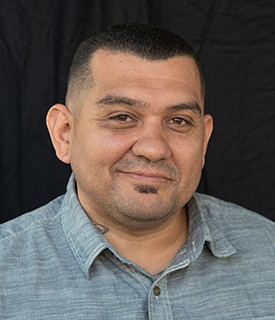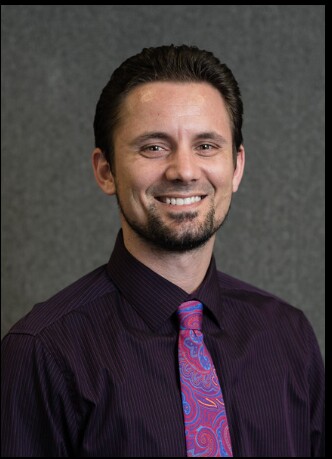What Is Generalized Anxiety Disorder?
Anxiety is a natural part of life. It is not at all unusual to experience feelings of fear or reluctance when trying something new. Normal anxiety may occur with a specific situation or problem and typically only lasts as long as that situation. It is also a proportional and realistic response to the situation.
For example, if you are about to present a speech to a group of people it is not at all uncommon to experience some symptoms of anxiety. Your heart may pound as the microphone is handed to you, and you may stutter or shake as you give your speech. On the other hand, if your sibling were to ask you to give a speech at their wedding, and your anxiety was so great that you not only declined the speech but declined to attend the wedding or ever set foot in the same room as your sibling again, you may have an anxiety disorder.
According to the National Institute of Mental Health (NIMH), generalized anxiety disorder (GAD) is characterized by a consistent feeling of dread that interferes with daily life. It manifests in different ways and can have any number of triggers. It is not the same as experiencing symptoms of anxiety due to a life event or having a day when you’re feeling particularly on edge. Symptoms of this disorder may last for months or even years.
Symptoms of Generalized Anxiety Disorder
How do we describe feelings of anxiety? Well, there are numerous ways that anxiety may present itself. Some examples of symptoms include:
- Feelings of restlessness, irritability, and frustration
- Finding yourself easily fatigued after everyday experiences
- Difficulty concentrating
- Inability to control feelings of worry or doom
- Inability to fall or stay asleep
- Headaches, muscle aches, stomachaches, or other unexplained pains
Anxiety may present with only a few of these symptoms. For example, someone might find themselves suddenly exhausted every day, but unable to sleep. They may start experiencing muscle aches and stomach aches before going to the doctor in the hope of receiving treatment, only to be told that there is nothing physically wrong with them. It is important to remember that because these symptoms are not the same between individuals, only a medical professional can confirm that your symptoms are caused by anxiety.
Other Anxiety Disorders
GAD is not the only form that an anxiety disorder may take. There are many different forms of anxiety, all of which require a medical professional to fully diagnose. Some examples of these are:
- Panic disorder: This disorder is characterized by frequent and unexpected panic attacks. Panic attacks are moments of intense fear/discomfort or a sense of losing control. These attacks may appear when there is no clear danger or trigger. A person may experience a pounding or racing heart, sweating, chest pain, and an impending sense of doom.
- Social anxiety disorder: If a client is experiencing anxiety that has been brought on by a persistent fear of being judged or watched by others, they may be diagnosed with social anxiety disorder. In some cases, this disorder may get in the way of attending work, school, social functions, or doing everyday things such as going to the grocery store.
- Phobia-related disorders: Phobias are characterized by an intense fear of specific objects or situations. Although there are times when fear or anxiety is a realistic response, a phobia represents a fear that is out of proportion to the actual danger caused by the situation or object.
Co-Occurring Disorders
Mood disorders such as bipolar disorder and major depressive disorder may also be associated with symptoms of anxiety. To be diagnosed with both depression and anxiety may limit the kinds of medications that may be used to treat your anxiety, which is why it is incredibly important to seek a medical professional for a thorough assessment and diagnosis.
According to the National Library of Medicine, it is also not uncommon for anxiety disorders to co-occur with substance use disorders (SUDs) both in the general population and in treatment-seeking samples. This co-occurrence is associated with greater symptom severity, meaning that while some members of the population may seek substance abuse as a form of self-treatment, it often makes their symptoms significantly worse.
Common Treatments for Anxiety
Trauma affects everyone differently, and some individuals might require long-term therapy to address all underlying and co-occurring issues related to their post-traumatic stress disorder. The clinical team at Crownview Co-Occurring Institute collaborates with each client to construct a tailored aftercare plan that ensures they continue receiving the support they need after completing a treatment program.
Aftercare services we offer include:
- Referrals to outside doctor and therapist offices
- Assistance with acquiring financial, housing, or job placement services
- Information about local self-help groups and community organizations
- Alumni services and support
We help our clients prepare to transition out of treatment by making sure they have a strong support system in place and access to all relevant resources.
Crownview Co-Occurring Institute offers a wide range of treatment options for individuals struggling with post-traumatic stress disorder. To learn more about our treatments and program services, call our office today at (855) 616-1095.



 Kimberly Gilkey, RADT-1
Kimberly Gilkey, RADT-1 Timothy Wieland
Timothy Wieland David Abram
David Abram Mark Melden, DO/DABPN
Mark Melden, DO/DABPN Jeffrey Klein
Jeffrey Klein Nathan Kuemmerle, MD
Nathan Kuemmerle, MD Laura Hopper, Ph.D.
Laura Hopper, Ph.D. Rebecca McKnight, PsyD
Rebecca McKnight, PsyD Milena Dun, PhD
Milena Dun, PhD Brieana Turner, MA, LMFT
Brieana Turner, MA, LMFT Brittany Perkins, MA, LMFT
Brittany Perkins, MA, LMFT Joanne Talbot-Miller, M.A., LMFT
Joanne Talbot-Miller, M.A., LMFT Alexis Weintraub, PsyD
Alexis Weintraub, PsyD Kathleen McCarrick, MSW, LSW
Kathleen McCarrick, MSW, LSW Christina Lam, N.P.
Christina Lam, N.P. John P. Flores, SUDCC-IV-CS, CADC II
John P. Flores, SUDCC-IV-CS, CADC II David Dalton, Facility Operations Director
David Dalton, Facility Operations Director Amy Thompson
Amy Thompson Kelly Schwarzer
Kelly Schwarzer Jovanna Wiggins
Jovanna Wiggins Alexandria Avalos, MSW, ACSW
Alexandria Avalos, MSW, ACSW Michelle Ertel
Michelle Ertel Emily Skillings
Emily Skillings Amanda Irrgang, Registered Dietitian Nutritionist (RDN)
Amanda Irrgang, Registered Dietitian Nutritionist (RDN) Gianna Melendez
Gianna Melendez Jodie Dahl, CpHT
Jodie Dahl, CpHT Jordan Granata, PsyD
Jordan Granata, PsyD